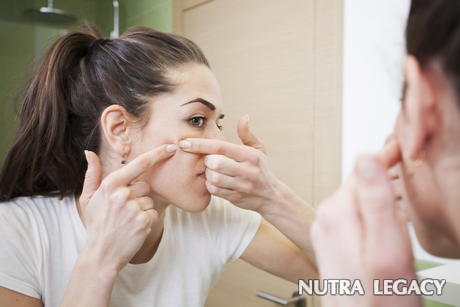Anatomy of Acne Prevention

- Acne breakouts – something we all experience because acne and hormones are directly related and, of course, we all have hormones
- Thankfully, many acne skin care products are available to help us deal with this most common and most troublesome skin care issue
Whether you’re a teenager facing outbreaks or you’re an adult trying to deal with bouts of acne, understanding the causes of these annoying blemishes can help you understand how best to fight back. Sadly, there are many myths about acne and this misinformation can sometimes prevent people from choosing the best treatments and preventative measures.
Understand the Structure of Acne
To understand your acne outbreak, you should first become familiar with the anatomy of acne and the different types of blemishes you might encounter. First, you need to understand a little bit about the geography of your skin. Each strand of hair on your body comes from a follicle. These follicles are what we sometimes refer to as pores. Inside each of these pores are glands known as the sebaceous glands which produce oil called sebum. The oil moves out of the follicle and onto the skin.
In some cases, the pore can get blocked. This can happen because of dirt, debris, cosmetics, dead skin cells, and even excessive oil. When this happens, the oil can’t reach the surface of the skin and builds up within the follicle. This is a good breeding ground for bacteria which begins to grow in the blocked pore.
Next Stages of Acne Formation
As the bacteria and the oil build up under the surface, they will start to bulge and become visible. When all of the build-up stays below the skin, you have a whitehead which is small and hard to see. If the sebum begins to push out to the surface, the melanin it contains will darken and will give the appearance characteristic of a blackhead.
Sometimes the acne becomes inflamed because of damage within the follicle. This causes the area to become red (papule) or to redden and fill with white blood cells (pustule). If the follicle breaks completely, a hard and sore nodule can form in the area. This nodule can sometimes grow larger and can fill with pus to form a cyst.
Causes of Acne
While understanding the anatomy of acne is a good first step, you should also know something about the causes. Contrary to many popular myths, acne is not a result of not cleaning your face enough or eating greasy foods or chocolate. Part of the reason why acne becomes so prevalent during adolescence is that hormones and acne are closely connected. Testosterone increases in both males and females at this time, and this hormone makes the sebaceous glands work overtime. After hormone levels mellow out, acne can be caused any time your pores or follicles are blocked.
Treating Acne
After you’ve learned the anatomy of acne, you’ve probably realized that an important part of getting rid of breakouts is drying up the excess oil within the follicle. Most people can use natural acne treatments and over the counter treatments that contain salicylic acid or benzoyl peroxide to dry up the oil and speed up the disappearance of the acne. You can also prevent breakouts by cleaning your fast with a mild soap daily. Don’t over wash, however, or you could irritate your skin and make breakouts more likely.
The information supplied in this article is not to be considered as medical advice and is for educational purposes only.
|
2 Responses to “Anatomy of Acne Prevention” | ||||||||||||||





 5 Dec 2008
5 Dec 2008
Personally, I have a bad habit of touching my face, examples, leaning on my hands, rubbing my chin. I found that this added to dirt in my pours and breakouts didn't occur in those spots once I became conscious of this. -MAugust 31st, 2009 at 11:32 am
Never, ever, ever pop the pimples either. They just make healing them take even longer and the scars you are left with is worse than the pimple ever was.January 20th, 2009 at 3:53 pm